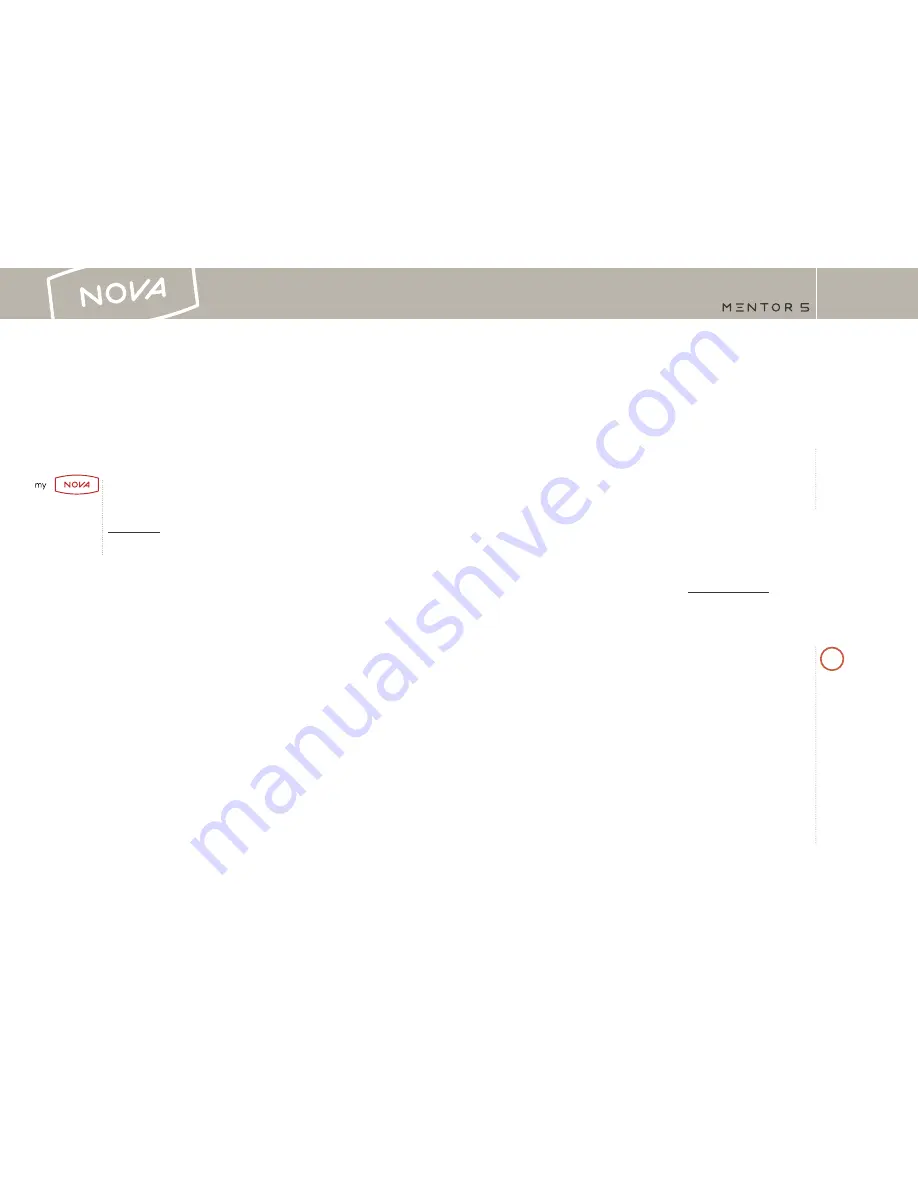
_
55
_
EN
_
54
• The free play of the brake has an effect on extreme flight incidents.
If the brake line length is modified, this can influence the reaction of
the glider.
Suitable harnesses
Your paraglider is certified for use with a harness classified as
GH (without cross-bracing). This group contains nearly all current-
ly available harnesses. The certification sticker on your harness
provides information on its classification.
Some harnesses allow particularly effective weight-shift, but at the
same time turbulence is directly fed back to the pilot. Other harnesses
are more damped and therefore more comfortable – but the disadvan-
tage is that they are less agile. Every pilot must decide for themselves
which set-up is suitable for him/herself.
NOVA wings are designed and tested using NOVA harnesses. Therefo-
re we recommend flying our wings in combination with our harnesses.
Weight range
Your paraglider is certified for a stipulated weight range. If you fly the
glider outside this range, you are outside the operating limits of the
equipment. Therefore the paraglider does not conform to the flying
characteristics determined during the certification process - this me-
ans your certification is no longer valid.
It is a question of personal preference whether you wish to fly at the
upper, lower or middle of the stipulated weight range. Low wing loa-
ding brings the advantages of, for example, high damping, a less dy-
namic feel and a great climb rate. The disadvantage is less speed, less
agility and reduced internal wing pressure. On the other hand, high
wing loading means more speed, a more taut canopy and more agility,
which has increased dynamics as a consequence.
The choice of
harness has a
major influence
on the flying
characteristics of
your paraglider.
We do not wish to
make a statement
like: »A wing must
be flown at the
upper weight limit«.
Which size is most
appropriate is
more a question of
individual taste and
the wing’s intended
purpose. While
flatland fliers prefer
less loaded wings,
in the Alps highly
loaded wings can be
an advantage.
On receiving your paraglider
Initial flight
Before sale, every NOVA wing is checked and flown by a NOVA dea-
ler.
The name of the pilot and date of this first flight must written on
the paraglider’s information label. Generally this will be situated in the
centre cell (at the profile rib).
Registration
In order to take advantage of the full guarantee and services, for ex-
ample
NOVA Protect,
you must register the paraglider at our web site:
my.nova.eu ↗
Accessories included
Your MENTOR 5 will be delivered with a glider bag (rucksack), in-
ner bag, riser bag, windsock, manual, self-adhesive repair tape,
additional speed system cords (Size S, M and L) and stickers.
Glider modification
At delivery, the specifications of a new paraglider conform to those
used during the certification process. Any user modification (for ex-
ample, change of the line length, modification of the riser) means the
glider no longer conforms to its certification. We recommend consul-
ting NOVA before any modification.
Care should be taken when modifying the brake line length: in the fac-
tory, the brake line is set so there is 10 to 15 centimetres free play.
This is essential for two reasons:
• If the speed system is engaged, the brake line travel is reduced. A brake
line modified to achieve shorter travel would mean that the wing would
be automatically braked when accelerated. Firstly, this would reduce
the effectiveness of the speed system and secondly this could
induce a stall.
This registration
must be completed
within 14 days of
purchase (invoice
date).
?
Summary of Contents for MENTOR 5
Page 1: ...Manual _DE _EN...









































